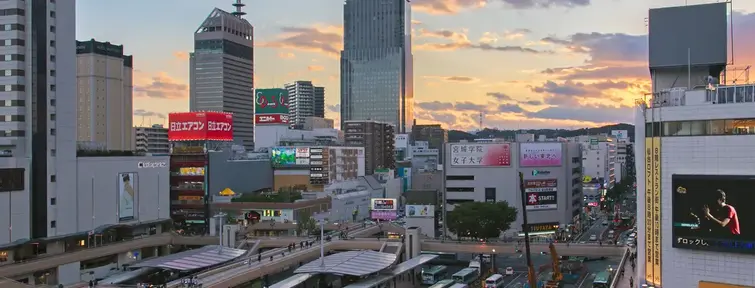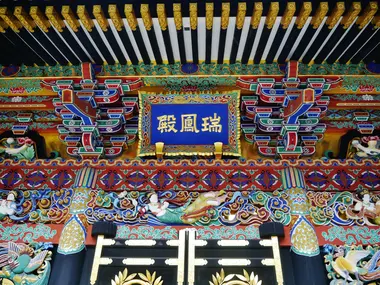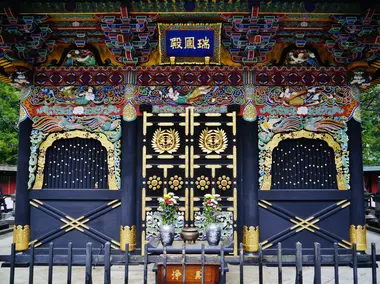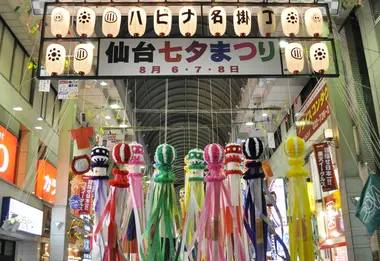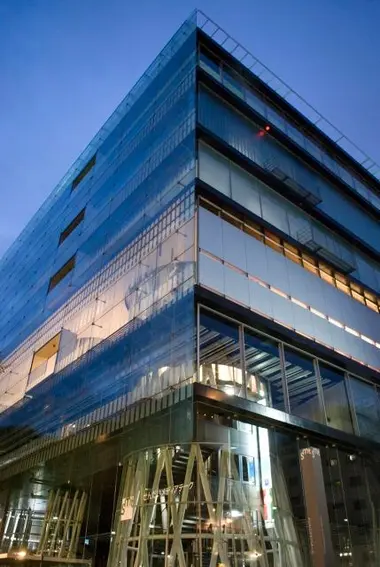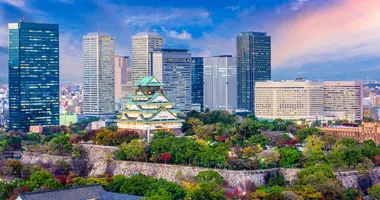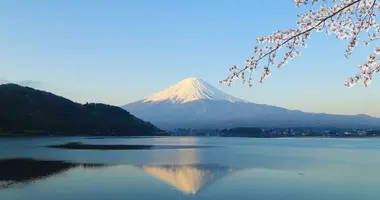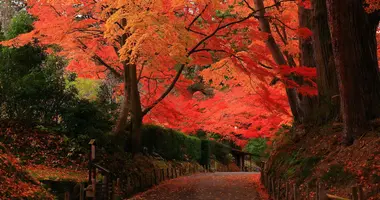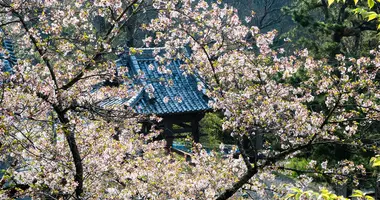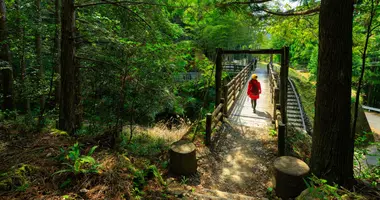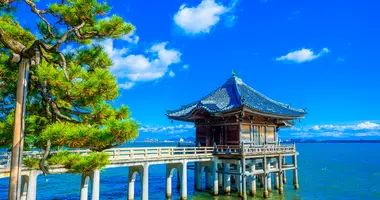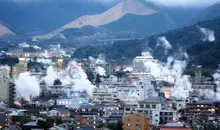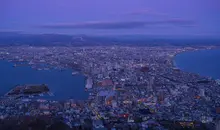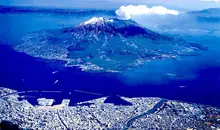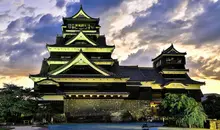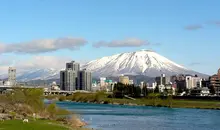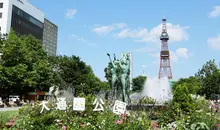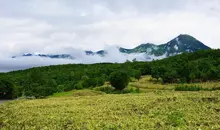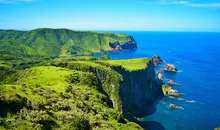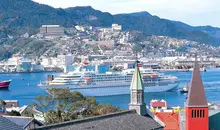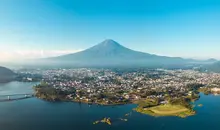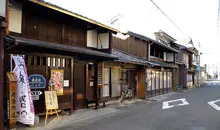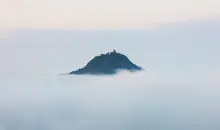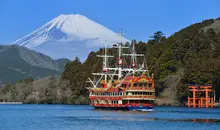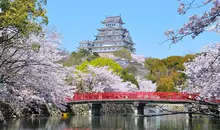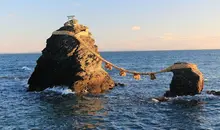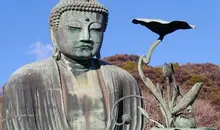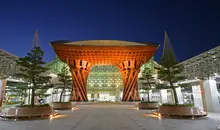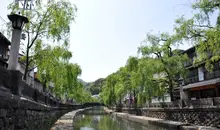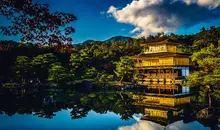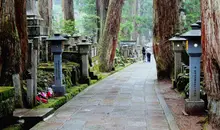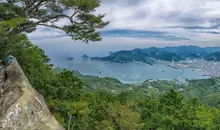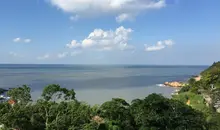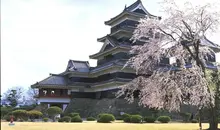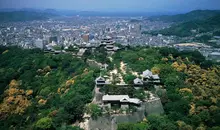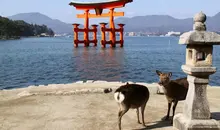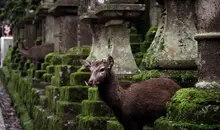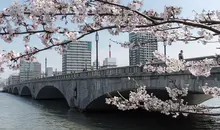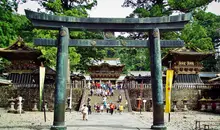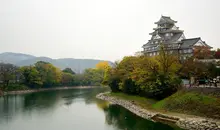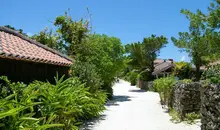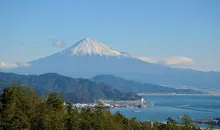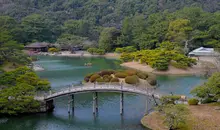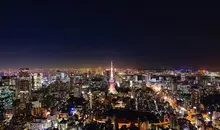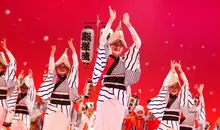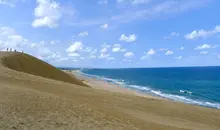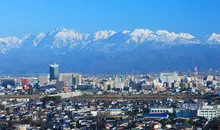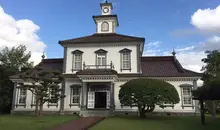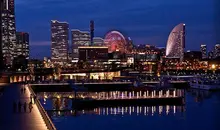Descubre Sendai
- Publicado el : 10/09/2025
- Por : Charley / Phoebe
- Youtube
Hora local 20:56
Symbol : cloudy_rainy
Temp : 7.4°C
Date : Hoy
Symbol : sunny_cloudy
Temp : 5°C
Date : Mañana
Symbol : sunny
Temp : 6.9°C
Date : Jueves
Symbol : sunny_cloudy
Temp : 9.9°C
Date : Viernes
Hora local 20:56
Symbol : cloudy_rainy
Temp : 7.4°C
Date : Hoy
Symbol : sunny_cloudy
Temp : 5°C
Date : Mañana
Symbol : sunny
Temp : 6.9°C
Date : Jueves
Symbol : sunny_cloudy
Temp : 9.9°C
Date : Viernes
La capital de Tôhoku y una ciudad imprescindible en el norte de Japón
Situada en el noreste de Japón, Sendai es la capital de la prefectura de Miyagi y la mayor ciudad de la región de Tohoku. Apodada la "ciudad de los árboles", esta metrópoli de más de un millón de habitantes ofrece un equilibrio perfecto entre modernidad urbana y un rico patrimonio histórico. Fundada en 1600 por el poderoso señor feudal Date Masamune, apodado el "dragón de un solo ojo", Sendai es famosa por su notable arquitectura, su gastronomía única y sus abundantes espacios verdes. Si le interesa la historia de los samuráis, la cocina local o simplemente busca una base ideal desde la que explorar la región de Tohoku, Sendai le encantará por su diversidad y autenticidad.
Sendai - Una historia medieval ligada al señor Masamune Date
Su casco adornado con una media luna, su armadura negra, su castillo: en Sendai, todo el mundo conoce a Masamune Date (1567-1636), el gran señor que convirtió este pequeño puerto en una próspera ciudad nada más fundarse en 1601. Excelente estratega militar, heredó la jefatura de la familia a una edad temprana y extendió rápidamente su territorio por la región de Tôhoku. Masamune era también un gran aficionado al teatro Noh y a la caligrafía. La historia y la influencia del "Dragón Tuerto" (apodo dado a Masamune, que perdió un ojo de niño) pueden descubrirse al oeste de Sendai, en la colina Kyogamine.
El antiguo castillo, Aoba-jô, contiene algunas magníficas piezas de época tras su imponente atalaya y, además de sus ruinas históricas, ofrece un panorama espectacular. No muy lejos, el santuario de Gokoku, afiliado al Yasukuni-jinja de Tokio, alberga un pequeño museo dedicado a la historia militar del Japón moderno.
Qué ver y hacer en Sendai
Sendai disfruta de un clima más fresco que el resto del país durante los calurosos y húmedos veranos japoneses, lo que la convierte en un lugar ideal para alojarse y explorar el norte del país.
Sendai disfruta de un clima más fresco durante los famosos veranos calurosos y húmedos de Japón, lo que la convierte en una excelente base desde la que explorar el norte del país.
Entre los lugares de interés y las actividades que se pueden realizar en Sendai y sus alrededores destacan el Museo Municipal de Sendai, el suntuoso Mausoleo de Masamune Zuihoden, las ruinas del Castillo de Sendai (Aoba-jô), la calle Jozenji-dori, bordeada de esculturas, y la bahía de Matsushima en la costa, salpicada de pintorescos islotes. En las montañas cercanas, el Zao Onsen cautiva con sus aguas termales y sus espectaculares vistas. El castillo de Shiroishi está a unos 50 minutos en tren hacia el sur.
El estadio de Miyagi, en Rifu, fue una de las sedes del Mundial de Fútbol de 2002. También albergó partidos de fútbol en los Juegos Olímpicos de 2020.
Lugares de interés en Sendai
El Zuihoden es el mausoleo del poderoso daimyo Masamune Date (pronunciado Dah-teh). Su elaborada belleza recuerda al mausoleo Tokugawa de Nikko.
Los edificios originales del siglo XVII, ricamente decorados, fueron destruidos durante la Segunda Guerra Mundial, pero se restauraron por completo en 1979.
Situado en lo alto de una empinada escalera de piedra en el corazón de un bosque, el lugar incluye también los mausoleos de Tadamune Date y Tsunamune Date, segundo y tercer sucesores del patriarca del clan Date.
El castillo de Sendai, también conocido como Aoba-jô, data de 1602, pero todo lo que queda hoy son sus impresionantes muros de piedra y su torre de vigilancia. Los jardines del castillo ofrecen hermosas vistas de la ciudad, así como una icónica estatua de Masamune a caballo. La Sala de Exposiciones del Castillo de Aoba muestra reconstrucciones digitales del castillo en su época de esplendor.
El santuario de Sendai Toshogu, cerca de la estación de Toshogu en la línea JR Senzan, fue construido por Tadamune Date en honor de Ieyasu Tokugawa, fundador del shogunato Tokugawa, y su renombrado aliado.
El templo Rinno-ji cuenta con una pagoda de tres pisos y un jardín de paseo, que son lo más destacado de la visita. Fundado en la década de 1440, fue trasladado a su ubicación actual a principios del siglo XVII. Es el templo de la familia Date.
El santuario Osaki Hachimangu, fundado por Masamune Date en 1607, es un tesoro nacional. La sala principal está decorada con laca negra y pan de oro. Hachiman se considera una deidad de la guerra.
El templo Komyo-ji, cerca de la estación Kita-Sendai de la línea Senzan, alberga la tumba de Tsunenaga Hasekura (1571-1622), embajador de Masamune Date en México y España. En 1613, Hasekura navegó a bordo del Date Maru a Acapulco vía Luzón, en Filipinas, antes de visitar España, Suiza y Roma. Su barco, con entre 150 y 180 hombres, fue uno de los primeros navíos japoneses en cruzar el Pacífico. Bautizado como cristiano, Hasekura regresó a Japón en 1620, aunque el cristianismo estaba proscrito por el régimen Tokugawa de la época. Su hijo, el sacerdote principal de Komyo-ji, y algunos de sus sirvientes fueron ejecutados por su fe.
Al noroeste del centro de Sendai, junto al Hotel Sendai Hills y el Club de Golf Sendai Hills, se alza una moderna estatua de Kannon (Diosa de la Misericordia), de 100 metros de altura.
El templo Ryuun-in, a 5 km al noroeste de la estación de Sendai, alberga la tumba de Shihei Hayashi (1738-1793), eminente militar cuyos escritos inspiraron el movimiento que condujo al fin del shogunato (Restauración Meiji) en 1867. Hay una estatua de Hayashi en el parque Kotodai y una placa conmemorativa en Aoba-jō.
El parque Nishi-koen fue en su día la zona residencial de los samuráis al servicio del clan Date. El parque Tsutsujigaoka es famoso por sus cerezos centenarios, algunos de los cuales se acercan a los 300 años.
Cómo llegar a Sendai
En avión
Hay conexiones aéreas desde Tokio, Osaka, Sapporo, Nagoya, Fukuoka, Pekín, Seúl y otros destinos asiáticos. El aeropuerto de Sendai está a 18 km al sur del centro de la ciudad y tiene servicio de autobús (40 min) y tren (servicio exprés de 17 min).
En tren
El JR Tohoku Shinkansen ofrece un servicio frecuente desde Tokio a la estación de Sendai (de 1 h 36 min a 2 h 32 min). Sendai también está conectada por tren con Yamagata, Matsushima y el aeropuerto de Sendai.
En autobús バスで
Servicios diarios de autobús conectan Sendai con Shinjuku (Tokio) y Niigata, así como autobuses nocturnos a Tokio, Kioto, Kanazawa y Osaka. Sendai es el principal centro de autobuses de la región de Tohoku, con salidas a la mayoría de destinos, incluidos Morioka, Akita, Aomori y Hachinohe.
En ferry
Los transbordadores nocturnos llegan a Nagoya y Tomakomai en Hokkaido desde Sendai-ko (tren JR local hasta la estación de Tagajo en la línea Senseki, después taxi, autobús o 15-20 minutos a pie desde la estación de Sendai). Los transbordadores los opera Taiheiyo Ferry.
El aeropuerto y el puerto de Sendai sufrieron daños en el terremoto y tsunami de marzo de 2011, pero ya están totalmente reparados y en funcionamiento.
Lugares de interés en los alrededores de Sendai
Sendai es una base excelente para explorar el resto de la prefectura de Miyagi y dirigirse al norte, a la región de Tohoku.
- Las pintorescas bahías de Matsushima yOku-Matsushima, la península que separa la bahía de Matsushima de la de Ishinomaki, son fácilmente accesibles en una excursión de medio día o un día entero desde Sendai. Oku-Matsushima es más conocida por sus imponentes y escarpados acantilados Sagakei, que ofrecen un memorable contraste con la tranquilidad de la bahía de Matsushima. Cruceros a precios razonables alrededor de los acantilados parten regularmente de Oku-Matsushima desde un muelle accesible desde la Ruta 27, cerca del hotel Ohtakamori Kanko. Se puede llegar a Oku-Matsushima desde la estación de Nobiru, 15 minutos al norte de Matsushima en la línea JR Senseki.
- Shiroishi, al sur, cuenta con un castillo restaurado y hermosas calles del periodo Edo para explorar a pie.
- Hay varios balnearios onsen a poca distancia de Sendai. Naruko Onsen está a una hora en tren de Sendai (línea JR Tohoku hasta Furukawa y luego línea JR Rikuu-Tosen hasta Naruko Onsen). Las aguas de Naruko son famosas por sus propiedades curativas. El espectacular desfiladero de Naruko está cerca y es accesible en autobús local.
- A Akiu On sen se llega en autobús desde la estación de Sendai. Desde este encantador balneario parten rutas de senderismo hasta la cascada de Akiu Otaki (55 m de altura) y el desfiladero de Futakuchi. El monte Daito-dake, de 1.366 metros, también puede escalarse en unas 3 horas.
- Sakunami cuenta con varias fuentes termales y está a sólo 38 minutos en tren en la línea Sanzen desde la estación de Sendai.
- Hiraizumi, declarado Patrimonio de la Humanidad por la UNESCO, está a unos 120 km al norte de Sendai. Hiraizumi es famoso por sus magníficos templos y jardines, entre los que destaca el Konjikido o Salón Dorado. Construido en 1124, este altar budista de 5,5 metros cuadrados y cuatro pilares está cubierto de laca negra decorada con pan de oro e incrustaciones de nácar.
- Yamadera (Risshaku-ji), en la vecina prefectura de Yamagata, data del año 860, pero alcanzó su apogeo durante el periodo Kamakura (1192-1333). Varios templos y subtemplos se alzan en un majestuoso bosque de cedros en el monte Hoju. Entre los cerca de 40 edificios religiosos, se dice que el templo Kompon Chudo aún alberga una llama encendida hace más de 1.000 años en el templo Enryaku-ji de Kioto.
- AOkuno-in, el templo más alto de la montaña, se llega tras subir 1.100 escalones Godai-do ofrece una magnífica vista del valle. El Hihokan es el tesoro del templo y el punto de entrada (500 yenes) para subir a la montaña.
- Desde la estación de Sendai, tome un tren JR Senzan hasta la estación de Yamadera (poco menos de una hora). El maestro del haiku Basho fue un visitante famoso y compuso aquí un famoso haiku, grabado en una estela de roca. El Basho Kinenkan (Museo Conmemorativo de Basho) está cerca de la estación de Yamadera.
Sabores de Sendai: descubra el gyutan y otras especialidades locales
La gastronomía de Sendai está dominada por su especialidad emblemática: el gyutan (lengua de vaca a la parrilla). Este plato único, nacido en los años de la posguerra, se ha convertido en un auténtico símbolo culinario de la ciudad. Cuenta la leyenda que el chef Keishiro Sano creó la receta en Sendai. El gyutan suele servirse en rodajas a la brasa, acompañado de arroz, una sopa ligera de rabo de buey y verduras en escabeche. Cada restaurante tiene su propia receta secreta, lo que hace que cada sabor sea único.
Para probar esta especialidad, diríjase a la zona de la estación, en particular al callejón Gyutan Dori, repleto de restaurantes especializados. Entre ellos, Aji Tasuke, famoso por su gyutan a la parrilla; Date-no-Gyutan Honpo, donde podrá probar el shintan, una parte tierna de la lengua cortada en gruesas lonchas; y Gyutan Sumiyaki Rikyu, que no sólo ofrece el gyutan tradicional, sino también una amplia gama de platos de temporada elaborados con productos locales.
Además de sus famosas especialidades de gyutan, Sendai ofrece otros descubrimientos gastronómicos. El zunda, una pasta dulce elaborada con habas de soja verdes, se puede encontrar en muchos postres, desde el mochi hasta los helados. El mercado matutino de Asaichi es una oportunidad para descubrir los productos agrícolas locales y el pescado recién capturado. Los amantes del marisco apreciarán especialmente las ostras y otros productos marinos, accesibles gracias a la proximidad de la bahía de Matsushima.
Los festivales emblemáticos que jalonan la vida en Sendai
El acontecimiento cultural más famoso de Sendai es sin duda el festival Tanabata, considerado el mayor de Japón. A diferencia de la mayoría de los festivales Tanabata, que se celebran el 7 de julio, el de Sendai tiene lugar entre el 6 y el 8 de agosto, según el calendario lunar tradicional. Durante estos tres días, toda la ciudad se engalana con miles de coloridas decoraciones de papel y bambú, conocidas como sasatake, que cuelgan de los techos de la estación central y a lo largo de calles comerciales como Chûô-dori y los soportales de Ichibancho.
Estos espectaculares adornos, fruto de una minuciosa artesanía que puede costar varios millones de yenes, simbolizan la leyenda de los amantes separados Orihime (Vega) y Hikoboshi (Altair).
Según la tradición, cada distrito comercial prepara un conjunto de cinco bambúes adornados con estandartes de papel, cuidadosamente escondidos hasta el día del festival.
Otra especialidad de Sendai es el Nanatsu-kazari, un conjunto de siete ornamentos diferentes que encarnan plegarias por los estudios, la prosperidad comercial, el talento para la costura, la pesca abundante, la salud, la limpieza y las artes.
El calendario cultural de Sendai también se ve salpicado por otros acontecimientos. En septiembre, el Festival de Jazz Callejero de Jozenji transforma las calles en un escenario al aire libre, acogiendo a cientos de músicos. En octubre, el Festival de Danza Yosakoi celebra la danza tradicional, mientras que en diciembre, el Desfile de la Luz de las Estrellas ilumina la ciudad con miles de luces durante la segunda mitad del mes.
La víspera de Tanabata, el 5 de agosto, tiene lugar un espectacular espectáculo de fuegos artificiales cerca del parque Nishi-koen, junto al río Hirose, que sirve de majestuoso preludio al festival.
Información sobre compras y museos en Sendai
Otros lugares incluidos en el recorrido en autobús de Loople Sendai, que parte del lado oeste de la estación de Sendai, son las dos principales calles comerciales de la ciudad, Aoba Dori e Ichibancho, así como Bansuisodo, la casa que se conserva del poeta y compositor local Bansui Doi.
Justo al norte de la estación de Sendai, en eledificio AER de 145,5 metros de altura, hay una sucursal de la librería Maruzen que vende libros en inglés, un Starbucks, y en la planta 31ᵉ, la Terraza Panorámica, que en un día despejado ofrece una magnífica vista de la ciudad.
El Museo Municipal de S endai presenta la historia de Sendai y exhibe los tesoros de la familia Date, entre ellos la armadura de Masamune Date y reliquias del fascinante viaje de su vasallo, Tsunenaga Hasekura (1613-1622), a México y Europa. Este épico viaje, la primera embajada japonesa a América y Europa, se relata en la novela El Samurái, de Shusaku Endo.
Otros museos de Sendai son el Museo de Bellas Artes de Miyagi y el Museo de Historia Natural de la Universidad de Tohoku. En cuanto a templos y santuarios, el Santuario Osaki Hachimangu, que data de 1607, es un buen ejemplo de la arquitectura del periodo Momoyama. Este santuario alberga a la deidad patrona de la familia Date y acoge el festival del fuego Donto cada enero. Cerca, el templo Rinnoji cuenta con un jardín japonés famoso por sus lirios en junio.
La Mediateca de Sendai es un moderno centro dedicado al arte y al cine, situado en Jozenji Dori. Acoge exposiciones, proyecciones de películas y talleres.
Nuestros circuitos
Si te interesa Descubre Sendai
Descubre y explora otras ciudades
